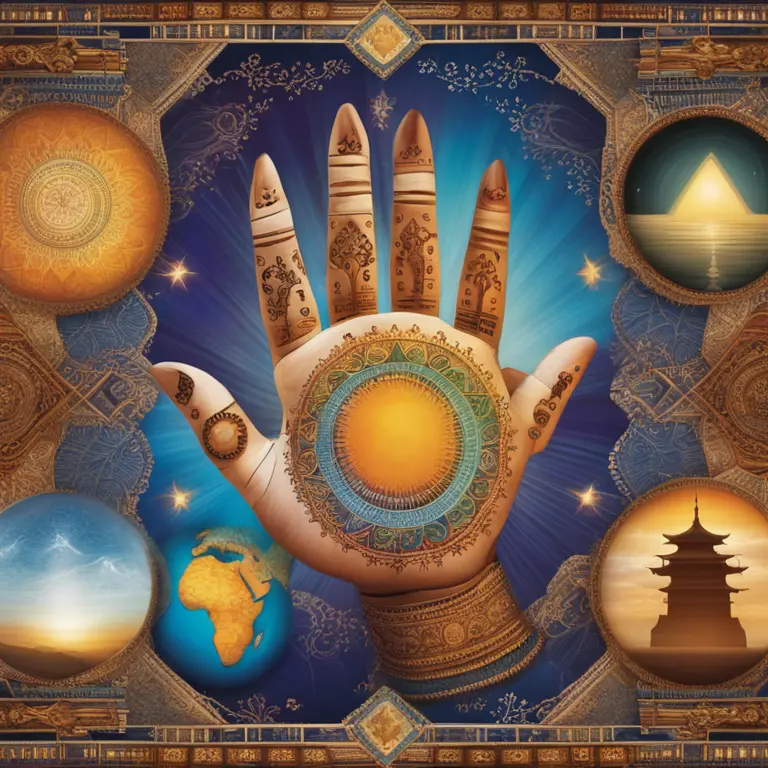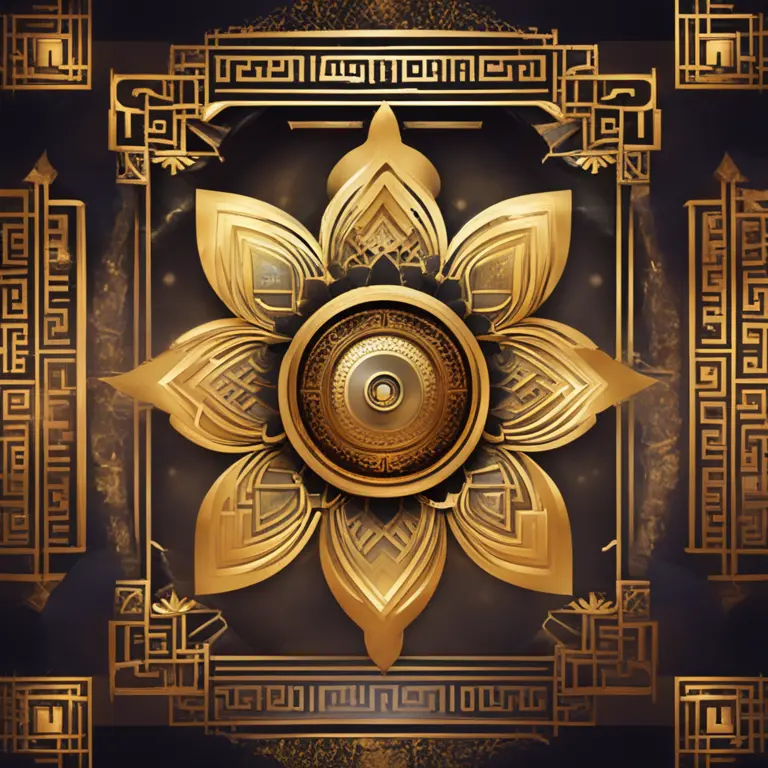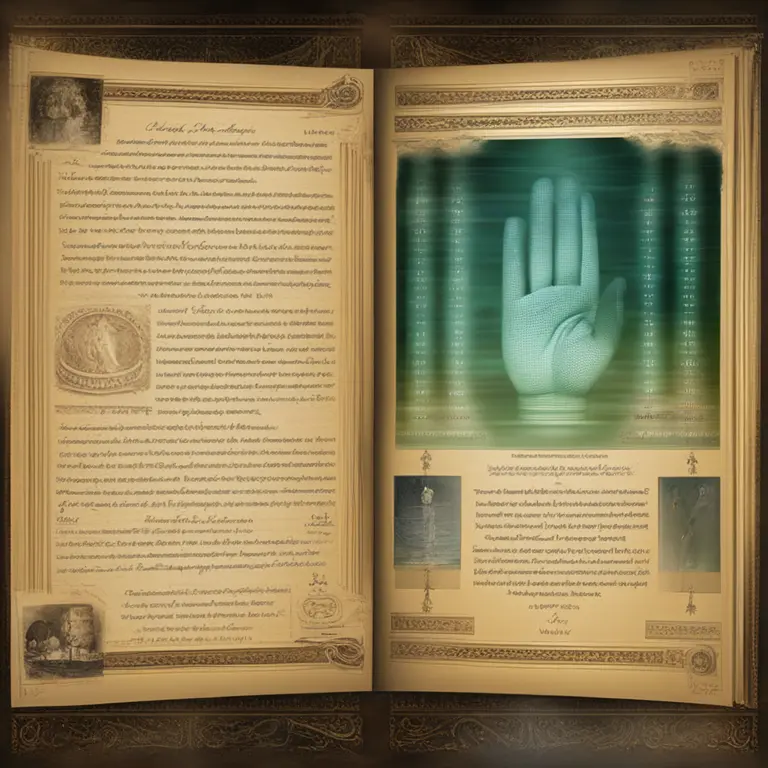
The Roots of Palmistry: A Historical Glimpse
Tracing back the ancient roots of palmistry, this article unveils the geographical and cultural beginnings of the art of hand reading.
article by Nora Pennington
The Dawn of Palm Reading
Long before contemporary interest in the esoteric arts, the practice of palmistry had already started unfolding its narrative across various cultures. Historical records suggest that palm reading, also known as chiromancy, could have originated as early as 3,000 BC. Accounts from various civilizations imply that this mystic art held significance in the daily lives and spiritual beliefs of ancient peoples. Scholars point towards the valleys of the Indus River in India as one of the earliest areas where palmistry was systematically practiced and later codified in the form of scriptures.

Global Cultural Tapestry
Astoundingly, palmistry did not flourish exclusively in a single region. As trade routes expanded, so too did cultural exchanges, leading to the dissemination of this mystical knowledge. Historical evidence indicates that palmistry was also known among the ancient Babylonians and Sumerians, laying the grounds for this practice in Western Asia. Furthermore, it is believed that Chinese and Tibetan cultures independently nurtured their own forms of hand reading, which speaks volumes about the universal human fascination with divination.

Classical Antiquity's Influence
The winding silhouettes of palmistry’s evolution carried it into ancient Greece, where figures like Anaxagoras furthered the legitimacy of the practice. His contemporaries, such as Aristotle, reportedly found a treatise on palmistry on an altar to Hermes and contributed their thoughts, embedding chiromancy into the philosophical and intellectual discourse of their time. This academic treatment helped palmistry to permeate European thought—a tradition that would be revisited in the Middle Ages and the Renaissance.

Rediscovery in the Middle Ages
Though clouded by the rise of rationalism during certain historical periods, palmistry experienced a revival during the late Middle Ages. It was a time when scholars and mystics sought to recover and synthesize esoteric knowledge, including the tradition of palm reading. The practice managed to survive through underground channels and was often associated with the Romani people, who were thought to have brought it to Europe from their ancestral Indian homeland.

Modern Palmistry's Emergence
By the 19th century, palmistry began to resemble what it is today. Figures such as Captain Casimir Stanislas D'Arpentigny and Dublin-born William John Warner, also known as Cheiro, standardized the basics of hand reading, thereby igniting broad public intrigue. They published texts and provided readings for the elite, securing palmistry's place in both popular culture and the cautious curiosity of scientific communities—which often debated its credibility.
Contemporary Relevance of Palmistry
Today, palmistry is observed and practiced globally with diverse approaches reflecting the cultural mix from where it draws. Influences from Vedic, Sino-Tibetan, and Western traditions merge into the current landscape, revealing a fascinating blend of history and spiritual praxis. The practice has adapted to the modern age, coexisting with technological advances and newer esoteric movements, carrying the ancient art of palm reading forward into the 21st century and beyond.
Published: 1/11/2024
Modified: 1/12/2024
More predictions
Come back here soon to learn more about yourself and your future


Can Palmistry Predict Your Path Incorrectly?
Delving into the accuracy of palm readings, this article examines whether palmistry can lead to incorrect predictions about one's life and destiny.


The Efficacy of Palmistry: Real Insight or Fancy?
Delve into the validity of palmistry as a form of divination. Is there a truth behind the lines on our palms, or is it just a charming fancy?


Palmistry: The Historical Overview
Delve into the dawn of palmistry and trace its journey through the corridors of time, uncovering the roots of this ancient practice.